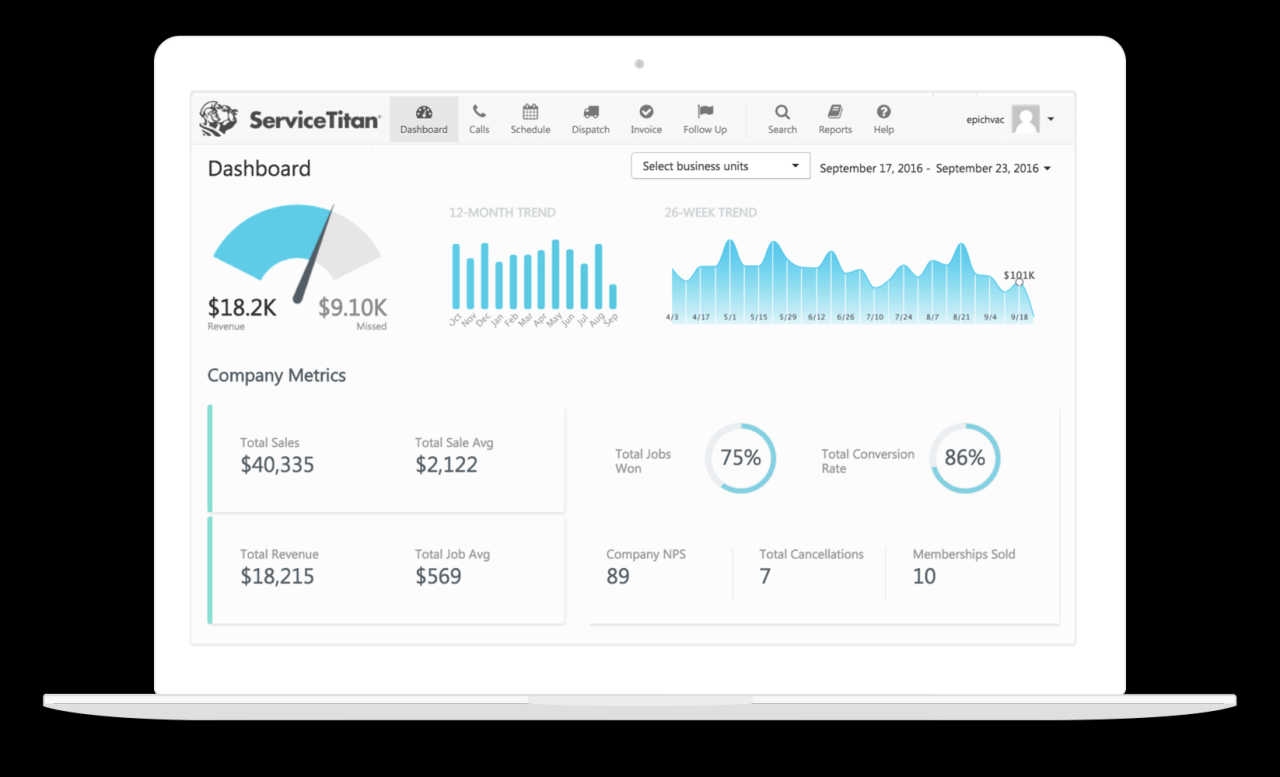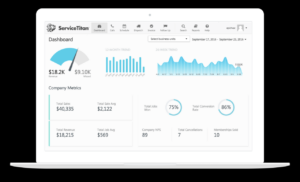In the realm of HVAC maintenance, service software emerges as a game-changer, offering a transformative solution to streamline operations and elevate customer satisfaction. Embark on a journey of discovery as we delve into the myriad benefits and capabilities of this technological marvel, empowering HVAC technicians with unparalleled efficiency and effectiveness.
From scheduling appointments and dispatching technicians to generating invoices and analyzing data, service software seamlessly integrates with HVAC systems, providing a comprehensive platform for managing all aspects of service operations. Join us as we explore the innovative features and advantages that make this software an indispensable tool for any HVAC business.
Contents
Service Software Features
Service software specifically designed for HVAC systems offers a comprehensive suite of features that streamline and enhance service management operations. These features include:
Scheduling and Dispatching
HVAC service software enables efficient scheduling and dispatching of technicians. It provides a centralized platform to manage appointments, track technician availability, and optimize routing for maximum efficiency. This helps businesses ensure timely service delivery, reduce scheduling conflicts, and improve customer satisfaction.
Invoicing and Billing
The software automates invoicing and billing processes, making it easy to track work completed, generate invoices, and process payments. It provides customizable invoice templates, allows for multiple payment methods, and integrates with accounting systems for seamless financial management.
Customer Management
HVAC service software helps businesses manage customer relationships effectively. It provides a centralized database to store customer information, track service history, and manage communication. This enables businesses to provide personalized service, build stronger relationships, and increase customer loyalty.
Inventory Management
The software can track inventory levels of HVAC parts and equipment. It provides real-time visibility into stock availability, helps businesses optimize inventory levels, and ensures timely delivery of parts for repairs.
Reporting and Analytics
HVAC service software provides robust reporting and analytics capabilities. It generates detailed reports on technician performance, service history, customer satisfaction, and other key metrics. This data helps businesses identify areas for improvement, make informed decisions, and enhance overall operational efficiency.
Integration with HVAC Systems
Service software seamlessly integrates with HVAC systems, enabling comprehensive monitoring, control, and optimization. This integration enhances efficiency by providing real-time data, remote access, and automated tasks.
Connecting software to HVAC equipment involves establishing a secure communication channel, typically through wired or wireless connections. Once connected, the software can access system parameters, control settings, and collect operational data.
Remote Monitoring
- Enables real-time monitoring of system performance, including temperature, humidity, and energy consumption.
- Provides early detection of potential issues, allowing for prompt maintenance and reducing downtime.
Data Analysis
- Software collects and analyzes operational data to identify trends, patterns, and inefficiencies.
- This analysis helps optimize system performance, reduce energy costs, and extend equipment lifespan.
Mobile Accessibility
In today’s fast-paced HVAC industry, technicians need to be able to access service software on the go. Mobile accessibility is essential for streamlining workflows, improving efficiency, and providing exceptional customer service.
Mobile apps for HVAC technicians offer a range of benefits, including:
Scheduling
- View and manage appointments from anywhere
- Update schedules in real-time
- Send appointment reminders to customers
Tracking
- Track job progress and completion status
- Monitor technician location and availability
- Access customer history and equipment information
Invoicing
- Create and send invoices on the spot
- Accept payments through the app
- Track invoice status and payments received
Reporting and Analytics
HVAC service software provides robust reporting and analytics capabilities that empower businesses to track and measure key performance indicators (KPIs) related to technician performance, equipment health, and customer satisfaction.
By leveraging data insights, service teams can identify areas for improvement, optimize operations, and make data-driven decisions to enhance overall service delivery.
Technician Performance
- Track technician productivity, including the number of service calls completed, time spent on each call, and first-time fix rates.
- Identify top-performing technicians and areas where training or support may be needed.
Equipment Health
- Monitor equipment performance and identify potential issues before they escalate into major failures.
- Schedule preventive maintenance based on equipment usage and performance data, reducing the risk of breakdowns and extending equipment lifespan.
Customer Satisfaction
- Collect customer feedback through surveys and reviews.
- Analyze customer satisfaction trends and identify areas where service can be improved.
Customer Relationship Management (CRM)

Service software for HVAC can enhance customer relationships by providing tools to manage customer data, track interactions, and automate communication. By leveraging CRM capabilities, HVAC businesses can improve customer satisfaction, increase retention, and build stronger relationships with their clients.
CRM features that support customer communication include email marketing, automated messaging, and personalized communication channels. These tools enable businesses to send targeted messages, provide timely updates, and respond to customer inquiries promptly and effectively.
Tracking Preferences
CRM systems also allow businesses to track customer preferences, such as preferred communication methods, service history, and equipment specifications. This information can be used to tailor communication and service offerings to meet individual customer needs, resulting in increased satisfaction and loyalty.
Loyalty Programs
Service software for HVAC can integrate with loyalty programs, enabling businesses to reward customers for repeat business and referrals. By offering incentives, discounts, and exclusive promotions, HVAC companies can encourage customer loyalty and drive repeat purchases.
Examples of Improved Customer Satisfaction and Retention
- Personalized communication and timely updates can reduce customer frustration and improve satisfaction.
- Tracking customer preferences and providing tailored services can enhance the customer experience and increase loyalty.
- Loyalty programs can incentivize repeat business, reduce churn, and increase customer lifetime value.
Final Thoughts
In conclusion, service software for HVAC is not merely a tool; it’s a catalyst for revolutionizing the industry. By harnessing its capabilities, HVAC businesses can unlock new levels of efficiency, enhance customer relationships, and gain invaluable insights to drive continuous improvement.
Embrace the transformative power of this software and witness the remarkable impact it can have on your operations, propelling your business towards unparalleled success.

